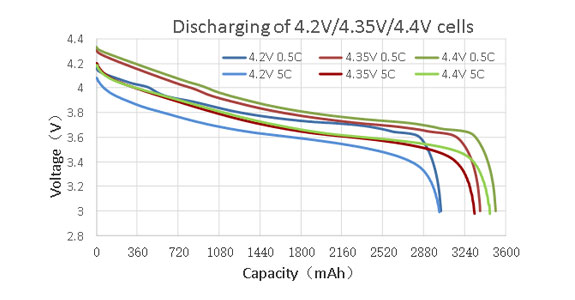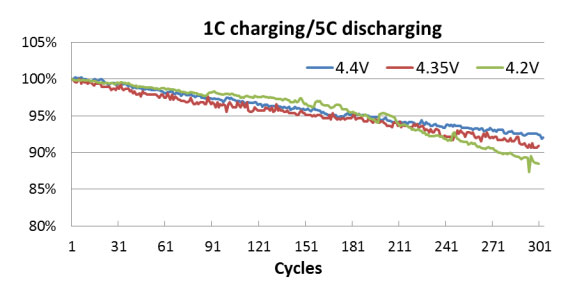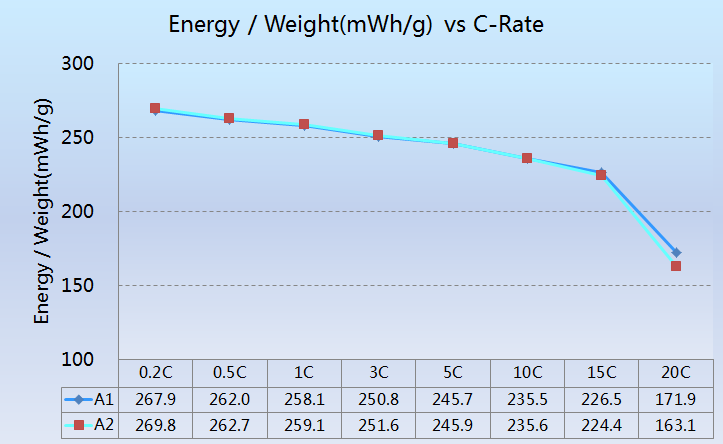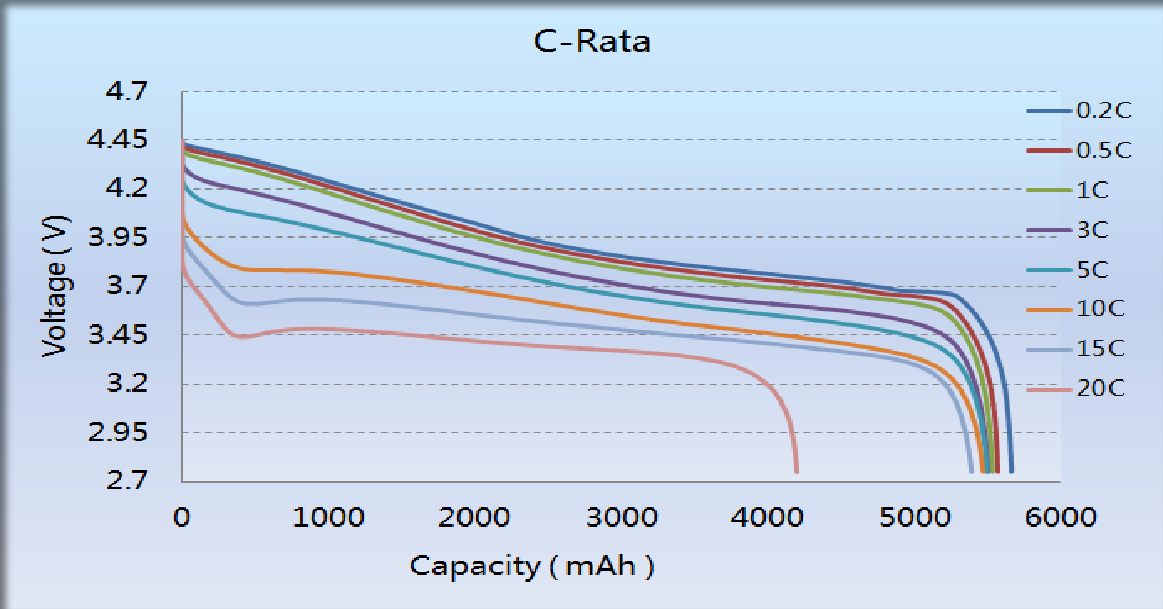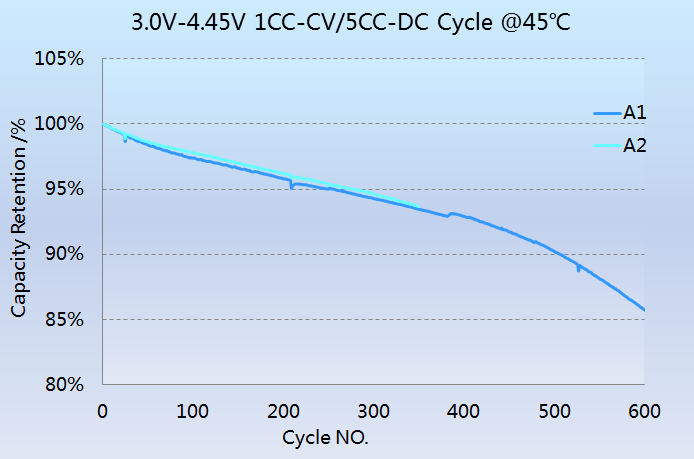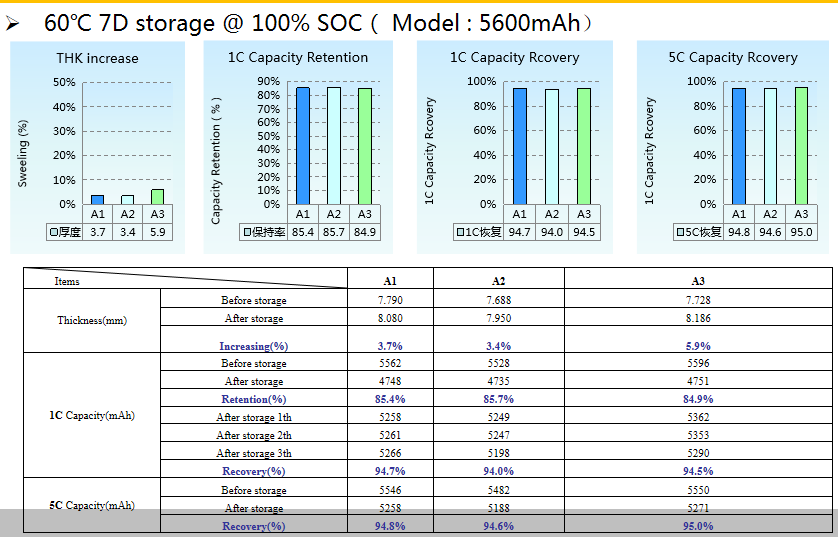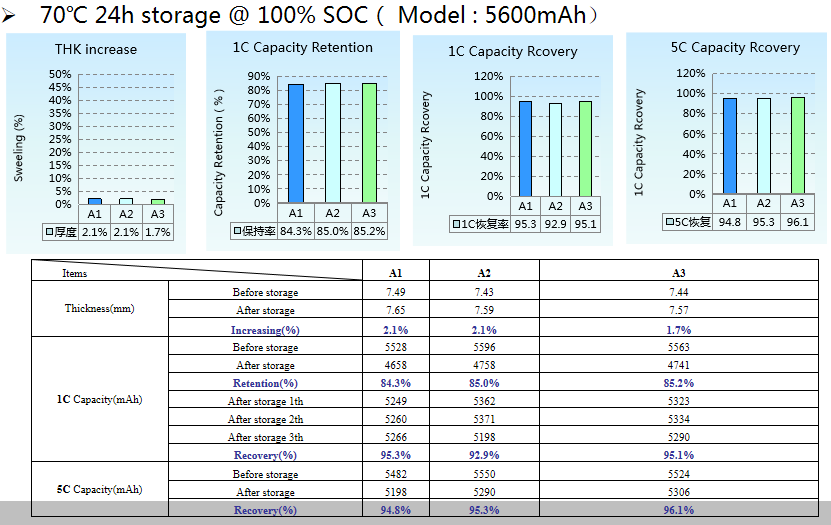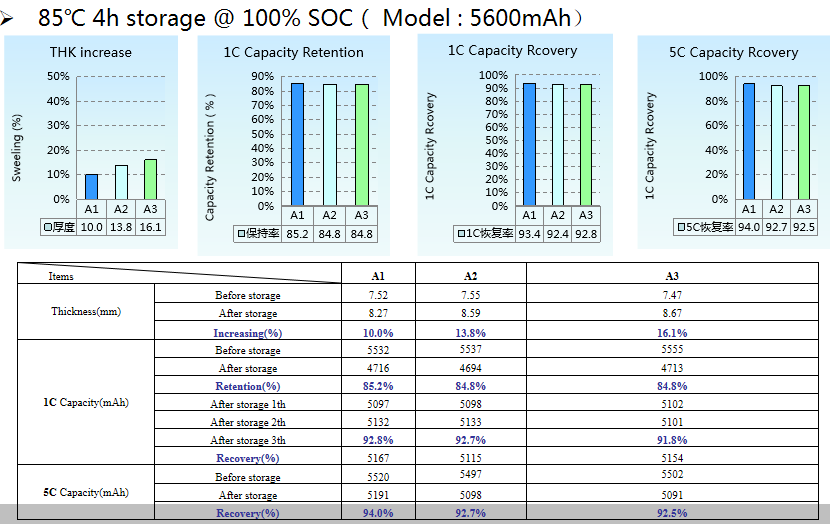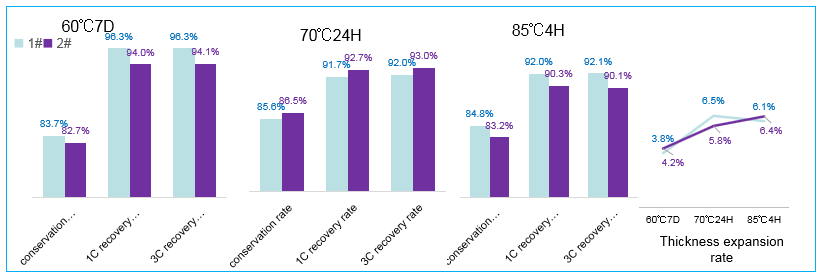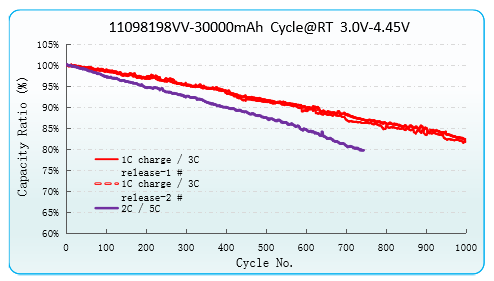High voltage LiPo battery 4.45V
High Voltage LiPo (Lithium Polymer), could be created as LiHV. It's similar to LiPo battery yet permits you to charge it as much as 4.45 V per cell safely, as well as routine lipo could be charged up to 4.2 v only.Lithium based batteries are anywhere in RC. The efficiency that we have the ability to get out of these packs are unbelievable compared with all previous battery technologies. Within the last couple of years a new design of LiPo based battery has emerged. It is known as the Lithium Polymer High Voltage battery pack. The pack is typically referenced as LiHV, identifying that it is a high voltage based lithium battery.
High Voltage LiPo attributes:
With a completely billed high voltage lipo battery, voltage is greater than regular LiPo's (on a four series, HVLi is 17.4 V, LiPo is 16.8 V), consequently your motors will certainly run more challenging at greater RPM, and your quad can fly quicker theoretically Second of all, LiHV can save much more power than LiPo per weight, so theoretically (once more) you obtain longer flight time. Ampxell (the company that makes these HVLi batteries we are testing) mentions there is a 10% boost in capability than standard LiPo's of the same dimension and weight
Finally, good quality high voltage lipo has reduced voltage droop over throttle.
What is a LiHv battery?
A LiHv battery is a various kind of Lithium-ion Polymer battery where "Hv" means "high voltage". It is a lot more power extensive than typical LiPo batteries. A LiHv battery is capable of crediting 4.45 V or greater per cell while the optimal cell voltage of a normal lithium polymer battery is 4.2 V and also the nominal voltage only 3.65 to 3.7 V.
Advantages of LiHv battery
Higher-end voltageLiHv batteries have a higher nominal and also peak cell voltage than their typical LiPo equivalents, which enables a higher charging cut-off voltage. The distinction in voltages could appear very little initially in one cell, but the benefit of high-voltage batteries becomes even more evident with a raised number of cells in a battery pack.
Higher capacity, longer run timeThe power thickness of a battery shows the battery's capacity for power storage per unit volume. Based upon the limited space and also weight of the power supply, the battery power
can be enhanced by enhancing the charging voltage, which is where we see the fully-charged voltage rise from 3.7 V to 3.8 V or even 3.85 V. This approach is mass-producible, as well
as the battery capacity can be boosted by around 15%.
The adhering to chart shows the difference in capacity between three fully-charged batteries at 4.2 V, 4.45 V, as well as 4.4 V:
As shown in the number above, LiHv batteries can release even more capability than common LiPo batteries, permitting your device to have a longer duration time.
Can I charge the regular LiPo batteries to 4.45 V?
The maximum charging voltage for normal LiPo batteries is 4.2 V per cell. Anything more than this is overcharging the battery, and it is not recommended.Overcharging includes repercussions: it can create changes in the framework of the cathode product or create a loss of capability or a terrible chain reaction when oxygen as well as electrolytes are launched. In worst-case scenarios, there can be explosions or fires.Even if the battery does not swell or catch on fire, overcharging will trigger damage to The battery as well as decrease its life as well as performance.
There are, certainly, different Smart batteries on the marketplace that are being equipped with a battery management system (BMS) that can establish the suitable fee cut-off voltage
(LiHv battery: 4.45 V, LiPo: 4.2 V), however lots of batteries that are utilized for drones or RC automobiles normally do not have a BMS. Customers that do not have a BMS constructed
into their batteries ought to set the cut-off voltage suitably on their battery chargers in order to avoid overcharging.
4.4 V LiHv battery
Generally, LiHv batteries are normally understood for having their optimum billing voltage be at 4.45 V, but Ampxell has an one-of-a-kind chemical formula that can supply it at 4.4 V
and even 4.45 V.
You can see in the graph over that the high-voltage 4.45V battery noted in green has a higher rate discharge system as well as higher discharge capability.
At the same number of cycles, you can see how the 4.45V battery has a greater portion of its original ability continuing to be contrasted to the 4.2 V battery.
Learn More about Ampxell LIHV Cell.
The following are simple specifications of two 4.4V LiHv batteries:
High Voltage 4.45V Cell (Model : 5600mAh)
Energy Desity for Rate Discharge( Model : 5600mAh,The energy density of 0.2C is about 270wh/kg. and 1.0C is about 260wh/kg, and 15C is about 225wh/kg
|
|
0.2C
|
0.5C
|
1C
|
3C
|
5C
|
10C
|
15C
|
20C
|
|
A1
|
5666
|
5573
|
5536
|
5506
|
5498
|
5472
|
5391
|
4200
|
|
A2
|
5705
|
5586
|
5552
|
5516
|
5500
|
5474
|
5350
|
3982
|
|
Average
|
5685.5
|
5579.5
|
5544
|
5511
|
5499
|
5473
|
5370.5
|
4091
|
|
Capacity % @0.2C
|
100%
|
98.1%
|
97.5%
|
96.9%
|
96.7%
|
96.3%
|
94.5%
|
72.0%
|
1C-CCCV-4.45V & Rate Discharge( Model : 5600mAh),This figure shows this cell have good rate discharge performance.
The capacity retention of 15C discharge is over 94%.
1CC-CV/5CCC-DC cycle life @45℃( Model : 5600mAh)In 45℃ environment, the cycle life is about 600 times.
60℃ 7D storage @ 100% SOC( Model : 5600mAh)The 4.45V cell has good storage performance
70℃ 24h storage @ 100% SOC( Model : 5600mAh)
85℃ 4h storage @ 100% SOC( Model : 5600mAh)
11098198VV-30000mAh High Voltage Cell performance
|
model
|
11098198VV-30000mAh
|
|
Voltage system
|
3.0V ~3.9V ~4.45V
|
|
Battery size / mm (MAX)
|
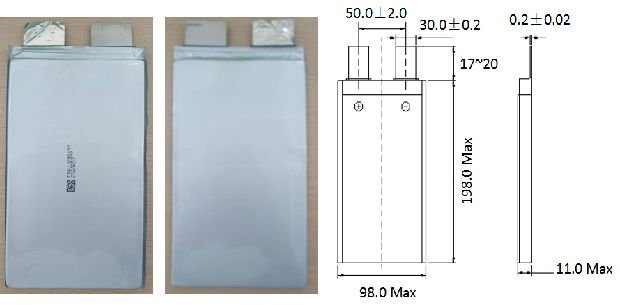
|
|
Typical capacity of @0.2C / mAh
|
31200
|
|
Nominal capacity of @0.2C / mAh
|
30000
|
|
Maximum internal resistance / m
|
1.0
|
|
Weight / g (± 3%)
|
456
|
|
Energy density @0.2C / Wh * kg-1
|
≥265
|
|
Maximum discharge ratio
|
5C
|
Above data is the cell basic details.
|
C-Rate
|
11098198VV-30000mAh -1#
|
11098198VV-30000mAh -2#
|
|
Capacity (mAh)
|
Energy
(mWh)
|
Mid Point Voltage
(mV)
|
Energy Density
(wh*kg-1)
|
Capacity Ratio(%)
|
Capacity (mAh)
|
Energy
(mWh)
|
Mid Point Voltage
(mV)
|
Energy Density
(wh*kg-1)
|
Capacity Ratio(%)
|
|
1C
|
31103
|
119846
|
3.796
|
262.7
|
100.00%
|
31172
|
120122
|
3.796
|
263.5
|
100.22%
|
|
2C
|
31010
|
117628
|
3.744
|
257.8
|
99.70%
|
31061
|
117790
|
3.744
|
258.4
|
99.86%
|
|
3C
|
31025
|
116227
|
3.707
|
254.8
|
99.75%
|
31065
|
116254
|
3.704
|
255.1
|
99.88%
|
|
5C
|
31063
|
113820
|
3.646
|
249.5
|
99.87%
|
31090
|
113916
|
3.645
|
249.9
|
99.96%
|
Above chart shows11098198VV-30000mAh discharge performance
|
test item
|
60℃7D
|
70℃24H
|
85℃4H
|
|
1#
|
2#
|
1#
|
2#
|
1#
|
2#
|
|
thickness (mm)
|
Before the high temperature
|
10.71
|
10.59
|
10.21
|
10.26
|
10.34
|
10.27
|
|
After the high temperature
|
11.12
|
11.03
|
10.87
|
10.85
|
10.97
|
10.93
|
|
1C capacity (mAh)
|
Capacity before high temperature
|
30796
|
30720
|
30860
|
30732
|
30787
|
30756
|
|
Maintain the capacity after the high temperature
|
25787
|
25418
|
26405
|
26579
|
26110
|
25596
|
|
Return to the capacity after the high temperature
|
29655
|
28881
|
28310
|
28489
|
28323
|
27788
|
|
3C capacity (mAh)
|
Capacity before high temperature
|
30737
|
30665
|
30804
|
30673
|
30712
|
30692
|
|
Return to the capacity after the high temperature
|
29605
|
28861
|
28350
|
28517
|
28275
|
27644
|
Above chart shows 11098198VV-30,000 mAh high-temperature storage performance,As shown in the figure above, the 11098198VV-30000mAh high-temperature storage 60℃ 7D, 70℃ 24H, and 85℃ 4H capacity retention rate are all> 80%, the 1C and 3C capacity recovery rate is all> 90%, and the battery thickness expansion rate before and after storage is <7%
Cycle test conditions (room temperature):
1) 1C / 2C constant current constant voltage charging to 4.45V, cut-off current of 0.02C;
2) shelving 30min;
3) 3C / 5C constant current discharge to 3.0V;
4) Set ving for 30min;
5) Repeat the above steps until the capacity retention rate ends below 80% of the initial capacity
Above chart shows that The discharge cycle life of 1C charge / 3C can reach 1000 weeks; 2C charge 5C discharge cycle life can reach 700 weeks
LiHV Battery Pack Specifications
Lithium high voltage batteries have a higher small and peak cell voltage. LiHV per cell heights at 4.45 volts where a common LiPo battery has a peak voltage of 4.20 volts. The small voltage of a LiHV battery is 3.85 volts whereas the nominal voltage for a regular LiPo is at 3.7 volts.Voltage cut off for a LiHV battery pack is the same as a common LiPo battery pack. The
outright minimum voltage that a cell need to get to is 3.2 volts. Nevertheless, in practice the battery ought to not be discharged past 80% of its complete capacity, Discharging a
LiHV further will certainly deteriorate the life-span of the pack.
In order to charge a LiHV cell, your battery charger should have the capacity to do so. Not all chargers can charging to 4.45 volts per cell. This is a needs to in order to receive any type of gain from a high voltage Lithium battery pack. Under no condition needs to you ever before try to bill a standard LiPo battery pack to 4.45 v per cell.
Application of LiHV Battery Packs
LiHV battery can practically be used in any type of RC application. There are a few notes to take into consideration regarding its applications, nonetheless. The batteries do only
enhance the amount of voltage by a percentage. The amount really just winds up being about 3.5%.when taking a look at the height voltage. Nonetheless, this is not the only amount of
efficiency that you will certainly end up seeing with these battery loads. The opposite of the coin is the present. When you are asking for the electric motor to rotate faster RPM's
due to the increase of voltage, the outcome will be an increase of existing. On the whole you may anticipate an efficiency increase of around 8-10 percent generally.
LiHV are not going to benefit every setup.A setup created around a conventional LiPo battery pack may not have the headroom for boosted efficiency. There are a handful of supply configurations running near optimum capability. If the arrangement is already pressing the limits it's not a good suggestion to utilize the cram in your application. A high quality RC item need to constantly have sufficient clearance where LiHV won't over tax the system.If you intend to make use of LiHV to order an added 10% more power, simply be particular that your system can withstand the rise in performance. A lot more warm build-up in the motor and ESC is a specific.
Are LiHV Batteries Worth it?
Allow's get to the point of the write-up. There's no question about it. LiHV batteries provide much better efficiency from a voltage standpoint in comparison to basic LiPo batteries. The voltage difference is subtle but builds up extremely swiftly as you enhance in cell matter. Increasing voltage can definitely bring about an increase in performance by increasing the overall amount of output motor RPM.
Increase RPM's by LiHV or just a higher Kv?
I personally configuration every one of my RC's specifically to the voltage that I plan to run. If I desire more RPM's out of the motor, I simply boost the kv of the electric motor. When I took a look at HV batteries for a certain arrangement, my decision was to simply obtain a brand-new electric motor with a somewhat higher Kv score. I know that the motor will quickly outlast the life-span of the battery pack.( Typically 3 years) I really did not wish to have a specialized battery for simply one RC car. It would be various if all the battery packs I own were LiHV based. Nevertheless, these packs are not mainstream. (Yet) It's certainly possible that the marketplace can transform as well as LiHV become a lot more traditional.


